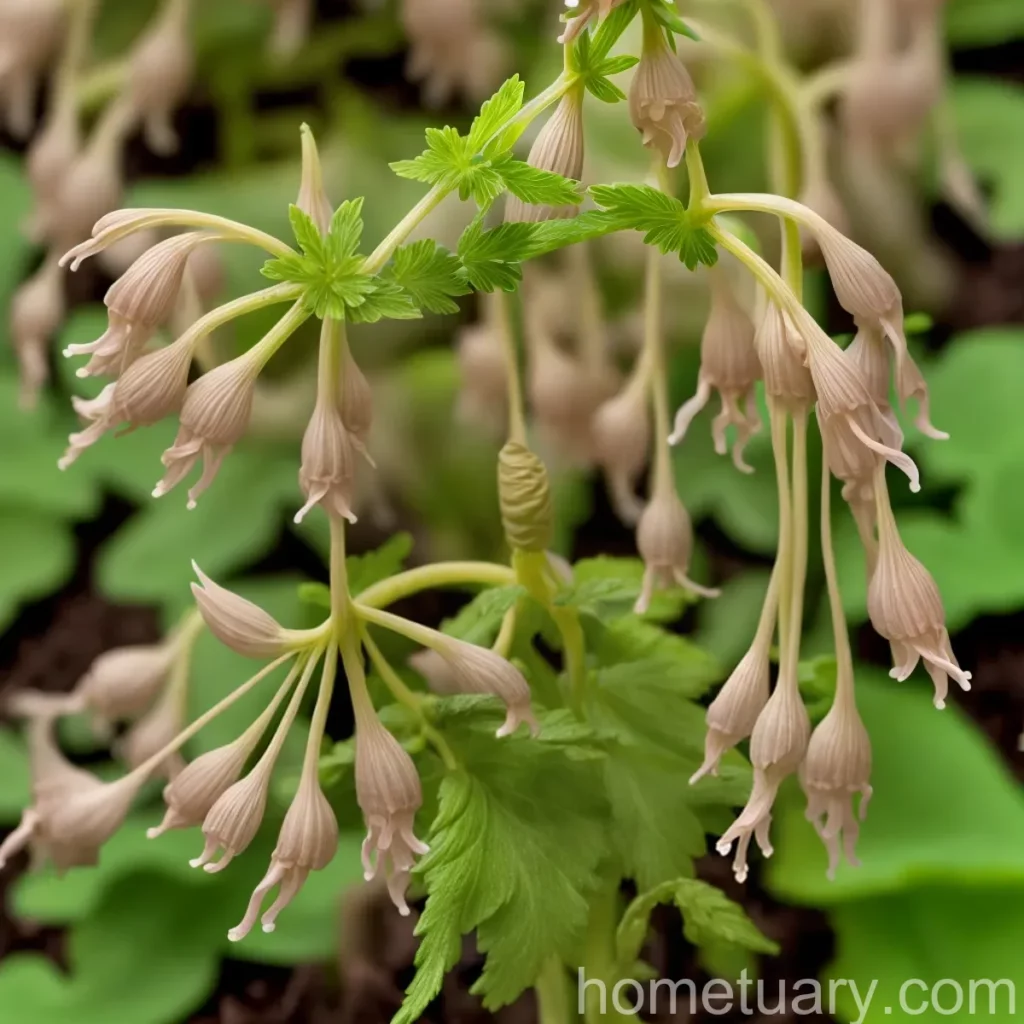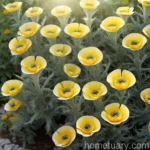The Fascinating World of Corydalis (Corydalis flexuosa ‘Pere David’)
Corydalis flexuosa ‘Pere David’ is a splendid perennial plant that belongs to the Fumariaceae family. It is a strikingly beautiful flowering plant that has been cherished for its elegant, fern-like foliage and delicate, clustered flowers. In this comprehensive guide, we will delve into the captivating realm of Corydalis flexuosa ‘Pere David’ and explore its culture, uses, maintenance, and much more.
What is Corydalis flexuosa ‘Pere David’?
Corydalis flexuosa ‘Pere David’ is an enchanting, herbaceous perennial that is celebrated for its vibrant and dainty blossoms. The plant showcases deeply cut, blue-green foliage and produces a profusion of exquisite, spurred flowers in shades of lilac, purple, and pink. Its delicate, fern-like leaves lend an ethereal charm to its appearance, enhancing the allure of its blooms.
This cultivar, ‘Pere David’, is particularly esteemed for its exceptional ornamental value and is a popular choice among gardening enthusiasts. It is native to woodland habitats and is admired for its ability to thrive in shaded garden areas, thereby adding a touch of elegance to any landscape.
Key Takeaways – Corydalis flexuosa ‘Pere David’
- Scientific Name: Corydalis flexuosa ‘Pere David’
- Common Name: Pere David Corydalis
- Family: Fumariaceae
- Plant Type: Herbaceous Perennial
- Foliage: Blue-green, finely divided, fern-like leaves
- Flowers: Clusters of spurred, jewel-toned blossoms in shades of lilac, purple, and pink
- Growth Habit: Clumping, mounding
Culture
Understanding the cultural requirements of Corydalis flexuosa ‘Pere David’ is vital for ensuring its optimal growth and development. Let’s explore the key elements of its culture.
Uses
Corydalis flexuosa ‘Pere David’ can be utilized in various ways to enhance the visual appeal of landscapes and gardens. Its primary uses include:
-
Ornamental Feature: The stunning foliage and captivating flowers of this plant make it an excellent choice for ornamental purposes. It can be grown in borders, woodland gardens, and shaded areas to introduce a touch of beauty and charm.
-
Ground Cover: Due to its clumping growth habit and lush foliage, Corydalis flexuosa ‘Pere David’ can serve as an attractive ground cover in shaded or partially shaded locations.
Water
Proper watering is crucial for the health and vigor of Corydalis flexuosa ‘Pere David’. This plant thrives in moist, well-drained soil and benefits from regular watering, especially during dry spells or prolonged periods of heat. However, it is essential to avoid overwatering, as the roots may rot in waterlogged conditions.
Sunlight
Corydalis flexuosa ‘Pere David’ exhibits a preference for partial to full shade. It flourishes in locations with dappled sunlight or gentle morning sun, making it an ideal choice for shaded garden areas. Excessive exposure to intense sunlight can lead to leaf scorch and diminish the overall health of the plant.
Fertilizer
A balanced, organic fertilizer can be applied in spring to encourage healthy growth and abundant flowering. Opt for a slow-release fertilizer or a well-balanced, water-soluble fertilizer to provide Corydalis flexuosa ‘Pere David’ with the essential nutrients it needs to thrive. It is advisable to follow the manufacturer’s instructions regarding the application and dosage of the fertilizer.
Soil
Corydalis flexuosa ‘Pere David’ thrives in moist, humus-rich, and well-drained soil. It prefers a slightly acidic to neutral pH and benefits from the addition of organic matter such as compost or well-rotted manure. Amending the soil with organic material helps improve its structure, fertility, and moisture-retention capabilities, creating an optimal growing environment for the plant.
Pruning
Pruning is not typically necessary for Corydalis flexuosa ‘Pere David’, as it forms a neat and compact clump. However, removing spent flowers and dead or damaged foliage can promote tidiness and encourage the plant to focus its energy on new growth and flowering. Any pruning or maintenance tasks should be carried out with clean, sharp tools to minimize the risk of disease transmission.
Propagation
Corydalis flexuosa ‘Pere David’ can be propagated through several methods, including division, seed sowing, and root cuttings. Each propagation technique offers unique advantages and challenges, and selecting the most suitable approach depends on individual preferences and requirements.
Container Popularity
Corydalis flexuosa ‘Pere David’ is a favored choice for container gardening, particularly in situations where garden space is limited or when specific design preferences call for potted plants. The plant’s compact size, attractive foliage, and charming flowers make it an excellent candidate for container cultivation. Whether grown in ornamental pots, patio containers, or hanging baskets, Corydalis flexuosa ‘Pere David’ thrives in well-drained, size-appropriate containers.
Common Diseases and Pest Control
While Corydalis flexuosa ‘Pere David’ is relatively resilient, it may be susceptible to certain diseases and pests that can hinder its growth and vitality. Understanding these potential risks and adopting preventive measures is essential for maintaining the plant’s well-being.
Common Diseases
Corydalis flexuosa ‘Pere David’ may face challenges associated with the following diseases:
-
Powdery Mildew: This fungal disease can manifest as a powdery, white coating on the plant’s foliage, negatively impacting its health and aesthetics.
-
Leaf Spot: Leaf spot diseases can cause discolored, spotted areas on the leaves, potentially leading to diminished vigor and defoliation.
-
Rot Diseases: Excessive moisture and poor drainage can make Corydalis flexuosa ‘Pere David’ susceptible to various types of rot, including root rot and crown rot.
Disease Diagnosis
Diagnosing plant diseases accurately is crucial for implementing effective treatment strategies. Proper diagnosis involves observing the symptoms, examining the affected plant parts, and, if necessary, seeking advice from gardening experts or diagnostic laboratories.
Common Pests
Corydalis flexuosa ‘Pere David’ may encounter the presence of certain pests, such as:
-
Aphids: These small, sap-sucking insects can cluster on the plant’s tender shoots and foliage, potentially causing damage and transmitting viral diseases.
-
Snails and Slugs: These voracious feeders can target the plant’s leaves and flowers, leaving behind conspicuous feeding damage and unsightly trails.
-
Spider Mites: These minuscule pests can infest the undersides of leaves, causing stippling, discoloration, and webbing, which can hinder photosynthesis and overall plant health.
Botanist’s Tips
Here are some expert tips and recommendations for successfully growing and caring for Corydalis flexuosa ‘Pere David’:
-
Shade Preference: Ensure that the plant is situated in a location with the appropriate amount of shade, as excessive sunlight can be detrimental to its well-being.
-
Regular Monitoring: Keep a close eye on the plant for any signs of stress, disease, or pest infestations. Early intervention can often prevent issues from escalating and causing significant harm.
-
Proper Watering: Maintain a consistent watering schedule, aiming to keep the soil evenly moist without allowing it to become waterlogged. Deep, thorough watering is generally preferable to frequent, shallow watering.
-
Mulching: Apply a layer of organic mulch around the base of the plant to help conserve soil moisture, suppress weeds, and enhance the overall health of the growing environment.
-
Supportive Structure: Consider providing physical support, such as stakes or a gentle framework, for taller varieties of Corydalis flexuosa ‘Pere David’, to prevent them from becoming leggy or sprawling.
Fun Facts
-
The genus name “Corydalis” is derived from the Greek word “korydalís,” which refers to the crested lark, potentially alluding to the shape or appearance of the plant’s flowers or fruits.
-
In traditional herbal medicine, certain species of Corydalis have been used for their potential medicinal properties, including as pain-relieving and anti-inflammatory agents.
-
Corydalis flexuosa ‘Pere David’ is known for its exceptional resilience and adaptability, making it a preferred choice for shaded and woodland gardens.
Links to External Resources
For further information and guidance on Corydalis flexuosa ‘Pere David’, refer to the following external resources:
- Royal Horticultural Society – Corydalis flexuosa ‘Pere David’
- Missouri Botanical Garden – Corydalis flexuosa
- Gardening Know How – Growing Corydalis Plants
- The American Horticultural Society – Understanding Powdery Mildew
- University of California Statewide Integrated Pest Management Program – Pest Management Guidelines
Corydalis flexuosa ‘Pere David’ is indeed a captivating and commendable addition to any garden or landscape. With its resplendent flowers, graceful foliage, and adaptability to shaded environments, it offers an enchanting allure and contributes to the overall beauty of outdoor spaces. By understanding its cultural preferences and employing effective maintenance practices, gardeners can nurture Corydalis flexuosa ‘Pere David’ to flourish and thrive, exhibiting its exquisite splendor season after season.















